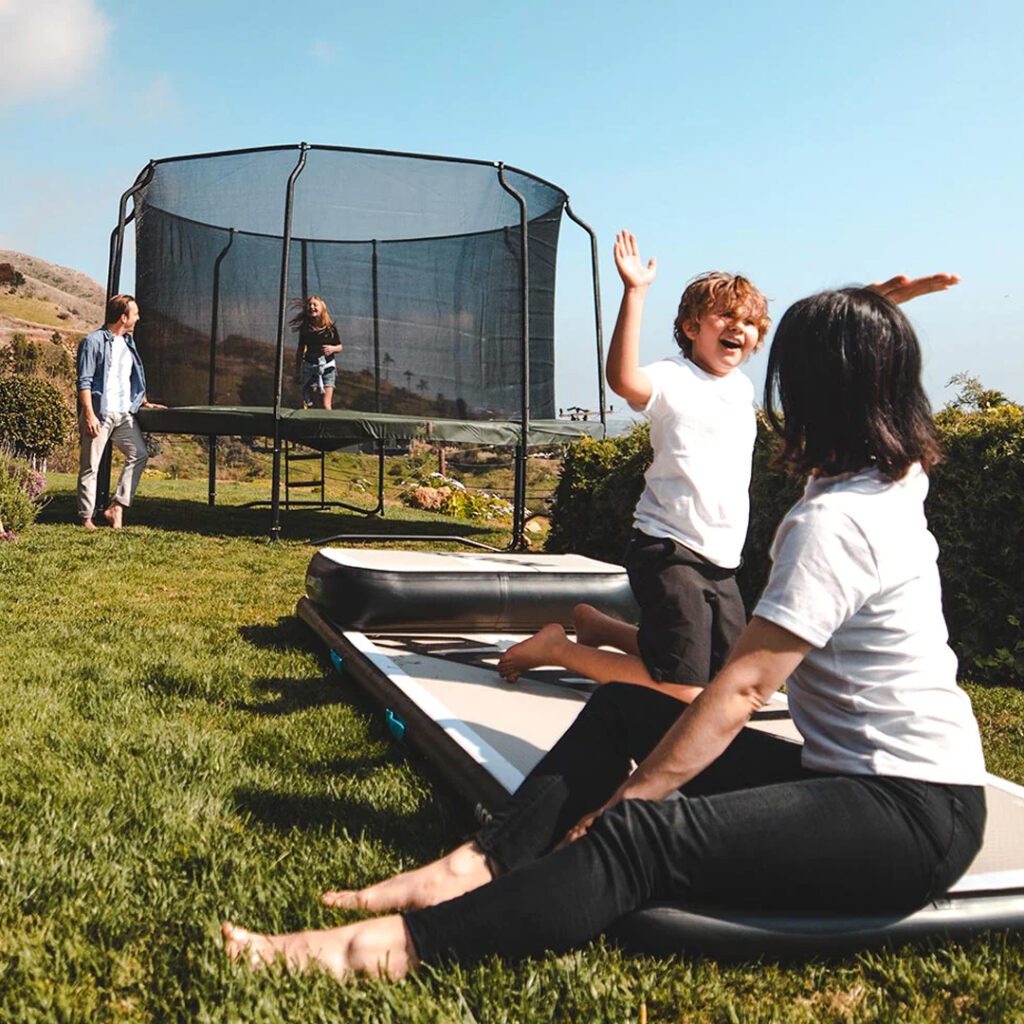
Looking for some fun quality time with your children? A trampoline is a great choice! Trampolines are super fun with fitness for both children’s and parents. But, as a parent, safety is always on your mind. Don’t worry – with a few easy tricks and precautions, you can make sure you all have a blast without any stress.
This guide will give you some important family trampoline safety tips to keep your family jumping safely all season. From making sure there’s enough padding and netting to setting rules about flipping and bouncing, we’ve got it all covered. While your children are happily bouncing and laughing, you can relax knowing it’s all safe. Keep reading for tips to keep your family happy and secure!
3 Must-Remember Points
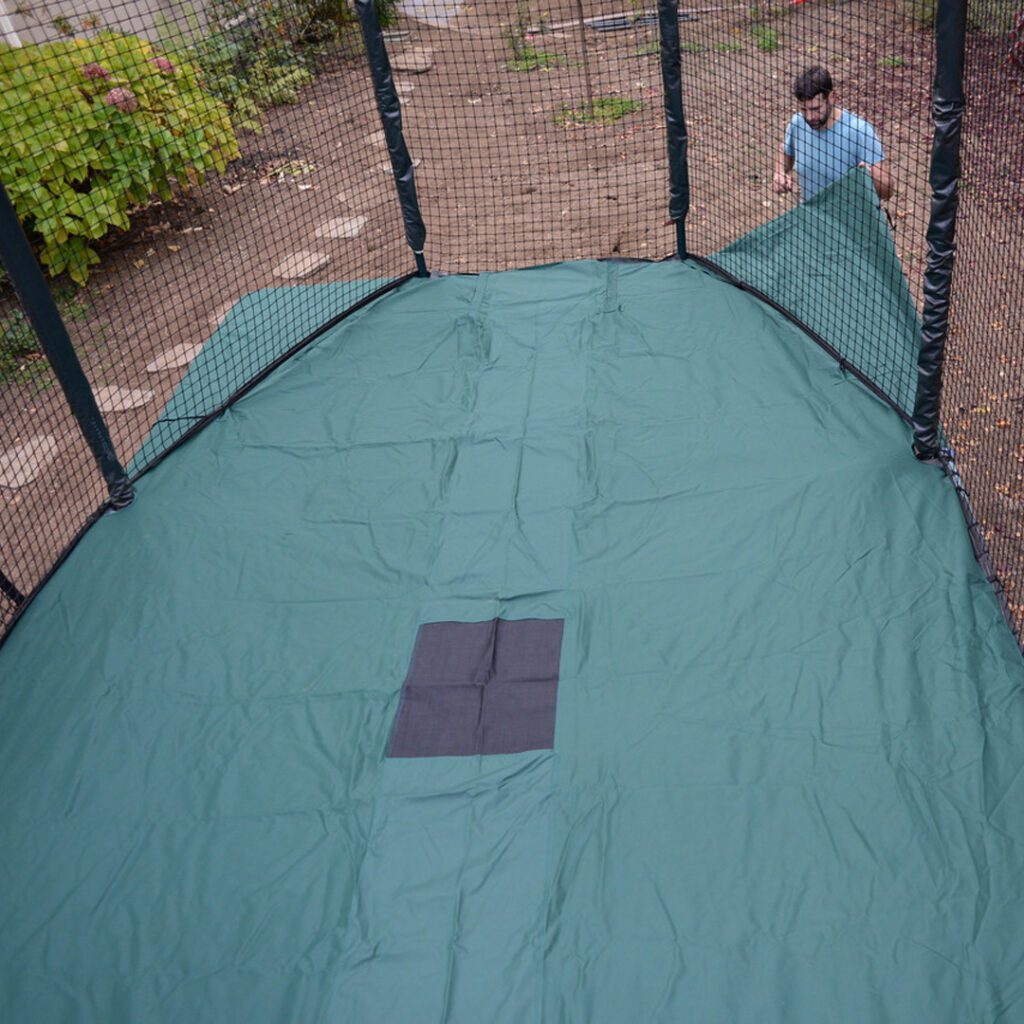
The thrill of bouncing, flipping and jumping high comes with risks of injury if proper precautions aren’t taken. As parents, it’s important we do all we can to minimize dangers and make trampoline time as secure as possible, as there is craze of trampoline among children.
Size and Placement
The size and placement of your trampoline matter more than you might think. A larger 14ft trampoline typically provides jumpers with more room to bounce and is safer, reducing the risk of injuries. The bigger the trampoline, the more space it gives for the little ones to engage in fun activities and is also more convenient for you. However, choose according to your garden size and your children’s age.
Place the trampoline on level ground, avoiding concrete, gravel or any hard surfaces. The ideal spot is grass or sand. Ensure the area is clear of any obstacles like trees, fences or garden furniture within 8 feet of the trampoline. This safe space will prevent accidental collisions and falls from the trampoline. Bury the trampoline legs in concrete for extra stability, especially in windy areas.
Safety Padding
High quality safety padding covers the springs and frame, protecting jumpers from pinches, scrapes and breaks. Look for thick, durable padding that securely attaches to the entire trampoline. Weather-resistant padding will last longer, especially if left outside. Replace any worn, torn or damaged padding before allowing children on the trampoline.
Rules and Supervision
Establish clear rules for trampoline use and enforce them rigorously. Only allow one jumper on at a time, forbid any somersaults or flips and set time limits for each child’s turn. Always supervise children and beginners. Spot them as they jump to help prevent falls or collisions. With the proper safety measures in place, your family trampoline can provide hours of fun and memories for years to come. But never forget – safety first!
Setting Up the Trampoline
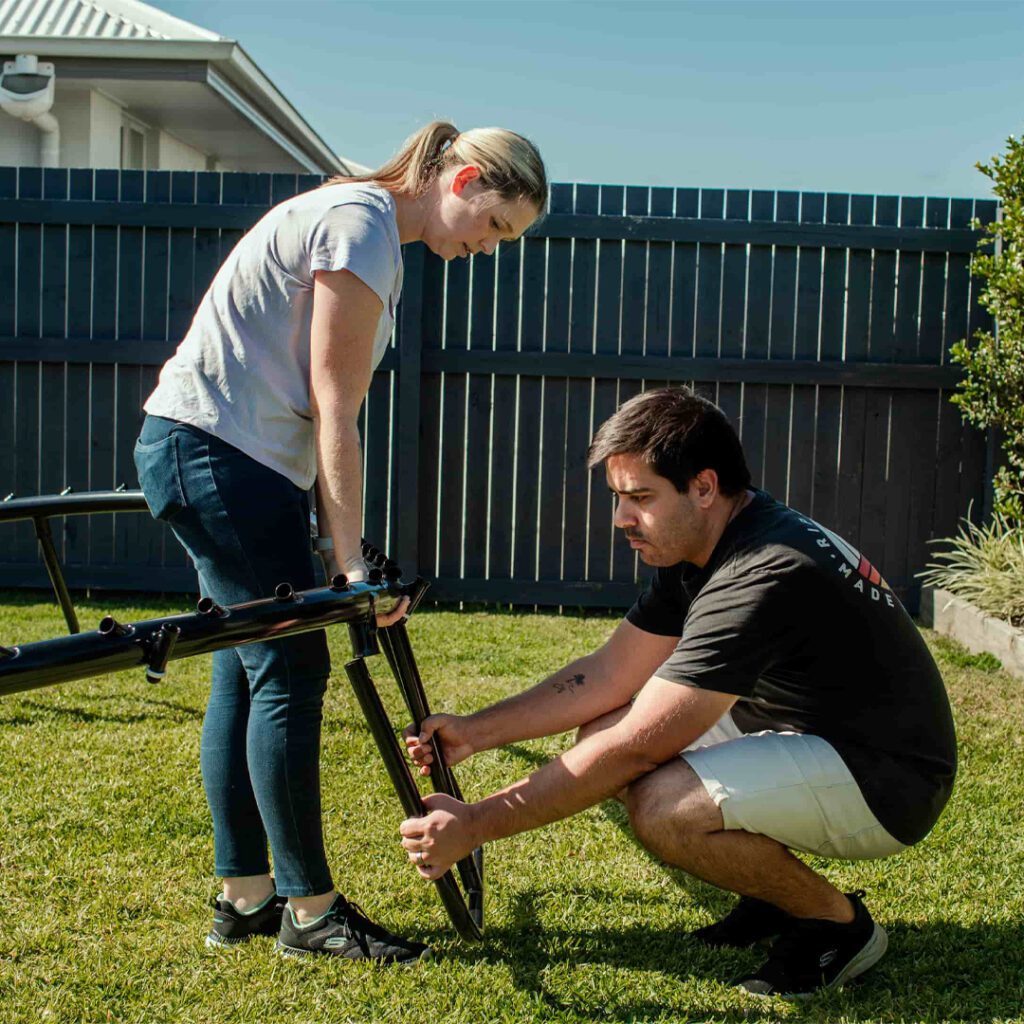
There is a surge in garden culture in the UK. People are trying out unique back garden designs and ideas for there garden. Choosing the right location in the garden is key to family trampoline safety. Pick a spot that is level, spacious, and well away from hazards. An unleveled surface or cramped area could lead to falls or collisions. Place the trampoline at least 6 meters from any structures, fences or play equipment.
Ensuring a level surface and adequate space
For the safest bouncing, the trampoline should sit on bare earth or grass, rather than concrete. Check that the ground underneath is flat using a level. If not, you may need to dig away uneven areas or build up the soil to create an even surface. Leave plenty of space, at least 2 meters, on all sides of the trampoline. This gives jumpers room to bounce and provides access all the way around. It also prevents falls onto hard surfaces.
Securing the trampoline with anchors
No matter how level the ground or how much space there is, a trampoline can still shift or tip over if it is not properly secured. Use heavy-duty trampoline anchors, stakes, or tie-downs to securely fasten the trampoline legs into the ground. Bury the anchors at least 1 meter deep for maximum stability. Anchors prevent the trampoline from moving, flipping or flying away in strong winds. They also stop it from gradually shifting out of place over time with repeated use.
Quality Trampoline Purchase
When buying a trampoline, you want to invest in a high-quality product that will keep your children safe for years to come. Here are some tips for choosing a reputable family trampoline:
Look for a reputable brand with a focus on safety.
Well-known brands like Famous brands and Super Tramp Trampolines are leaders for a reason – they put safety first. They rigorously test their designs to meet strict safety standards and certifications. No brand is perfect, but in general, trusted brands are less likely to cut corners on quality or safety.
Pay attention to weight limits and maximum user capacity.
Choose a trampoline size and weight capacity suitable for your family. Most brands specify a maximum number of users and total weight limit for each trampoline size. Do not exceed these limits, as it can damage the trampoline and increase the risk of injury. For families with multiple childerns of varying ages, a larger trampoline with a higher weight capacity is a must.
Never cut corners on safety – it’s just not worth the risk.
Essential Safety Equipment
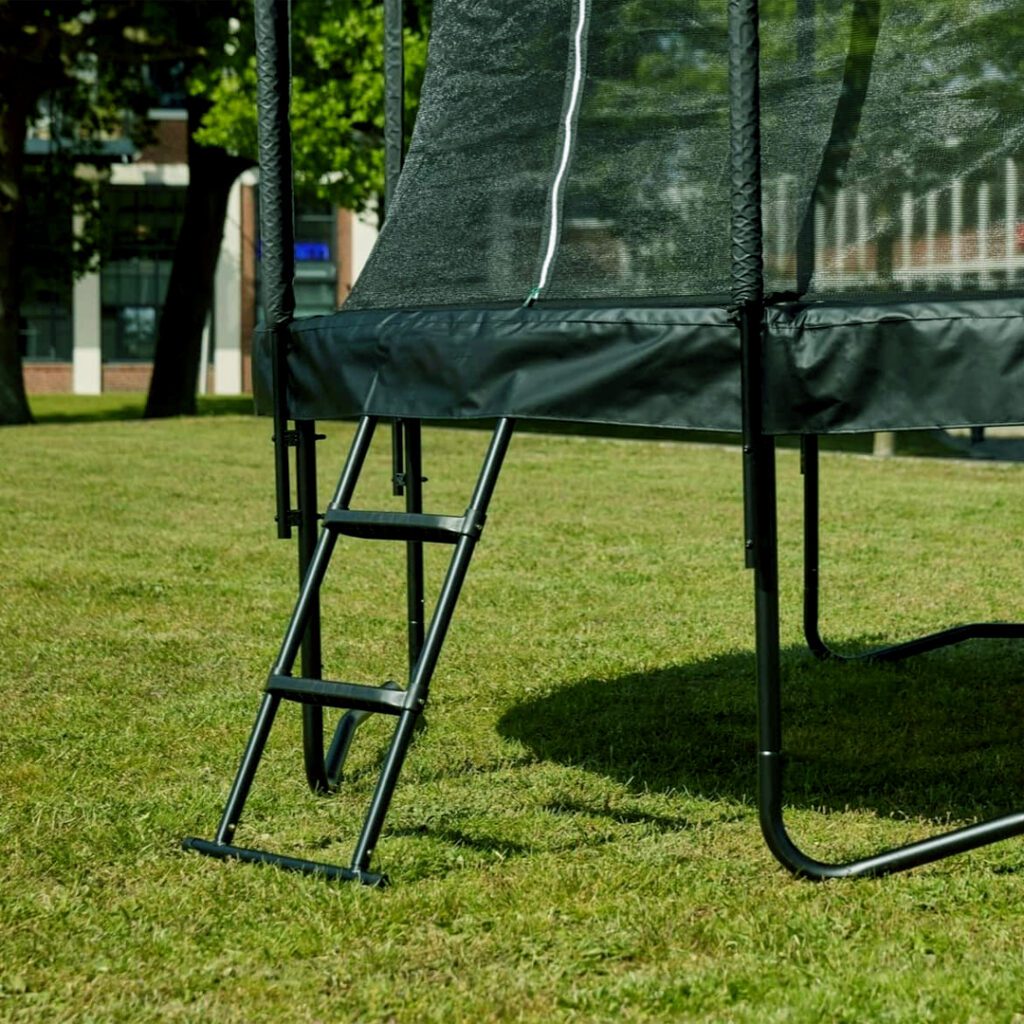
Having the proper safety equipment for your trampoline is essential for preventing injuries. Installing safety nets, pads and using sturdy ladders are must-haves.
Safety nets
Safety nets surrounding the trampoline mat help prevent falls from the trampoline. They should cover the springs and frame, with mesh small enough that limbs and fingers cannot fit through. Look for nets that are specifically designed for trampolines, with durable netting and secure attachments. Properly installed, safety nets can reduce the risk of fractures and other injuries from falls.
Trampoline pads
Thick trampoline pads that cover the springs and frame also help prevent injuries. Pads protect jumpers from landing on or colliding with the hard frame and springs, reducing the chance of fractures, sprains and strains. High-quality trampoline pads should securely cover all springs and the upper frame, be water resistant and weatherproof, and have padding at least an inch thick.
Sturdy ladders
A sturdy ladder provides safe access on and off the trampoline, especially for younger or less agile jumpers. Look for a ladder with wide, anti-slip steps and a platform at the top. The trampoline ladder should be securely attached to the frame, but also removable when the trampoline is not in use. Proper installation and use of ladders can help prevent falls and injuries getting on and off the trampoline.
Following these essential safety tips will ensure your family’s fun on the trampoline doesn’t lead to unnecessary injuries. Take the time to properly install high-quality safety equipment before letting the child start bouncing! Their safety is worth the investment.
Weather Considerations
The weather can greatly impact the safety of your trampoline. Several precautions should be taken to avoid injury.
Avoid use in high winds
Trampolines can become airborne in strong gusts, even when anchored. Do not use the trampoline when wind speeds exceed 25 mph. High winds can also cause the trampoline mat and springs to become damaged more quickly.
Disassemble trampoline before severe storms
If there are warnings of severe thunderstorms, hurricanes or tornadoes in your area, it is best to disassemble your trampoline completely. Remove the springs, mat and frame pads to prevent them from becoming projectiles in high winds. Store all parts in a garage or shed until the storm has passed.
Cover trampoline when not in use
When the trampoline is not being used for an extended time, protect it with a trampoline cover to protect it from the elements. UV radiation from the sun can damage the mat, springs and pads. Covering the trampoline will help prevent weathering and keep your trampoline in good shape for many years. Use straps, rope or bungee cords to securely fasten the cover in place, especially in windy areas.
Allow wet trampoline to dry before using
Never use a wet trampoline. The slippery pads and mat become dangerous, and the weight of water puts extra stress on the springs and mat. Allow at least 1 to 2 hours after rain has stopped for your trampoline to air dry completely before allowing children to jump again. You can also gently wipe down the frame, mat and pads with an absorbent towel to speed up drying time.
By following these weather-related safety tips, you’ll keep your trampoline in great shape for years to come and avoid preventable injuries. Better safe than airborne!
Encouraging Active Supervision
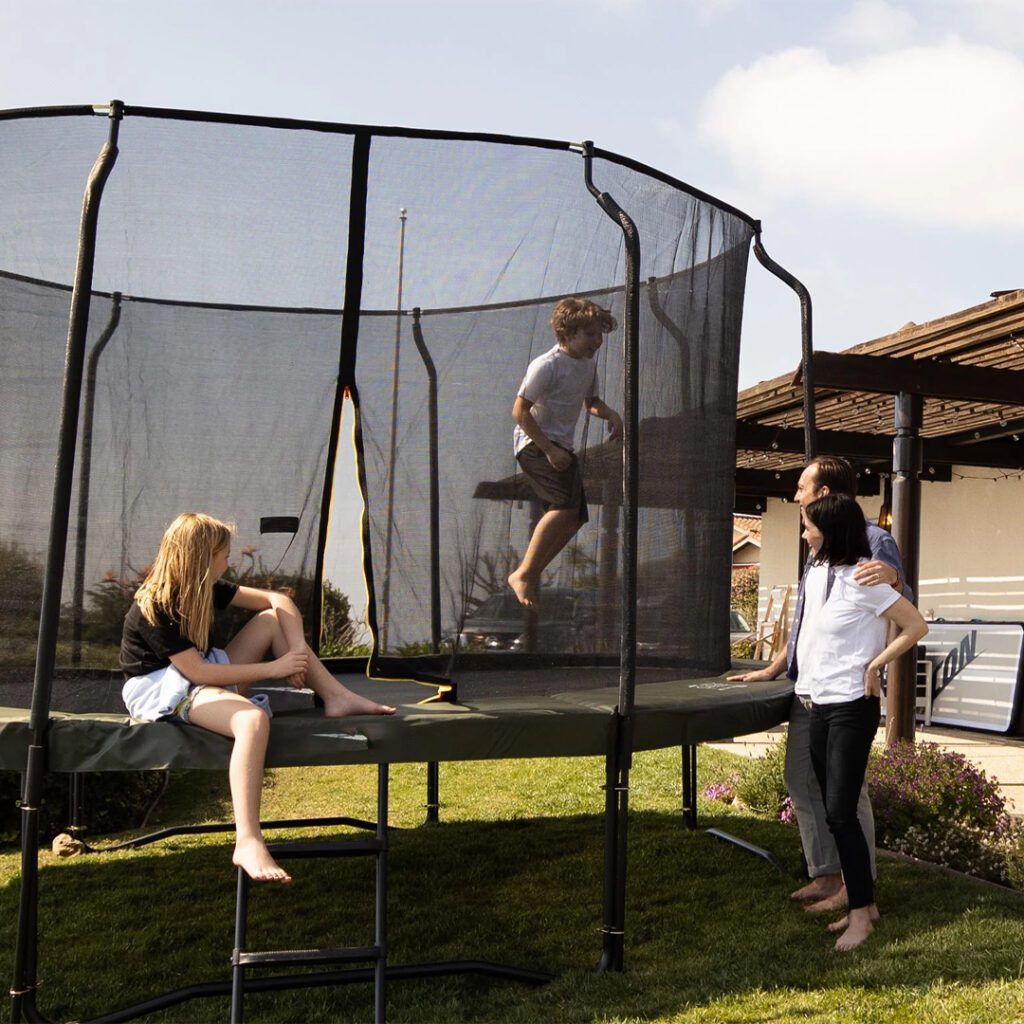
As a parent, actively supervising your children while they’re on the trampoline is non-negotiable. Trampolines can be tons of fun, but they also pose risks if misused or left unmonitored.
Designate a responsible adult
Decide who will be in charge of supervising the trampoline before the children go out to play. Take turns if needed, but make sure an adult has eyes on the jumpers at all times. children can get rowdy and accidents happen in the blink of an eye.
- Appoint a head supervisor for each trampoline session. Have them keep watch over the equipment, ensure safety measures like proper padding are in place, and monitor jumper behaviour.
- Other parents or guardians should also do spot checks, even if they’re not the designated lead. Multiple sets of eyes are best.
- Set ground rules for the kinds of activities allowed and not allowed ahead of time. The supervising adult should enforce these rules to avoid dangerous stunts or collisions.
Stay focused and engaged
Giving the trampoline your full attention is key. Don’t get distracted by phones, chores or conversations. Keep safety top of mind.
- Stand close enough to the trampoline to see all parts of the jumping surface. Scan the whole trampoline frequently, not just where the most active jumpers are.
- Watch out for signs that jumpers are getting too rowdy or trying risky maneuvers. Issue warnings or intervene immediately if needed.
- Limit the number of children on the trampoline at once based on their sizes and skill levels. Overcrowding poses risks for collisions and loss of control.
- Blow a whistle or use another signal to get the children’ attention if you see any unsafe behaviour. They should stop jumping immediately until you give the all clear.
Be present, be vigilant and don’t hesitate to enforce the rules. The joy and memories of family trampoline time will be well worth the effort.
Conclusion
So there you have it, parents. Some simple but essential trampoline safety hacks to keep in mind this summer. By following these tips, you’ll ensure your little jumpers can have fun while minimising the risk of injury. Install safety pads, nets and learn how to properly spot children. Set clear rules around one jumper at a time, no flips or somersaults. And for the love of your sanity, enforce the ‘no shoes’ rule – there’s nothing quite like stepping onto a wet, grass-stained sock in your living room! Most of all, lead by example and make it a family affair. Join your children’s, laugh, bond over epic jumps and create cherished memories. The trampoline may be an investment, but the rewards of family time together are priceless. Stay safe, jump high and enjoy!





